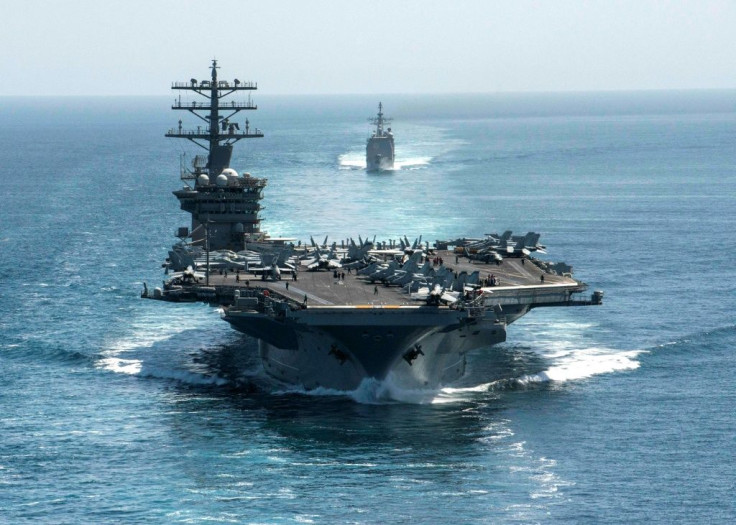US Super Aircraft Carrier Back At Sea After Repairs, Prepares For Global Deployment
KEY POINTS
- 11 sailors reported symptoms like headache and diarrhea from water contamination
- The ship prepares for deployment after tests showed the potable water was safe to consume
- USS Nimitz will join other ships in Carrier Strike Group for Composite Unit Training Exercise
The aging aircraft carrier USS Nimitz is back at sea after repairs, as it prepares for its upcoming global deployment, which could be the ship's last-ever, before its planned decommissioning.
The carrier left the pier at Naval Air Station North Island in San Diego, California, on Sunday to join the other ships in its Carrier Strike Group for the Composite Unit Training Exercise (COMPTUEX), USNI News reported Monday.
Just days after claiming that the USS Nimitz, the world's largest multi-mission nuclear-powered aircraft carrier, was fit for its global deployment, the supercarrier remained stuck at port due to drinking water contamination.
"Nimitz got underway after all tests came back in limits and the potable water was determined to be safe for the crew," U.S. 3rd Fleet spokesperson Cmdr. Sean Robertson said in a statement.
The Navy earlier confirmed that the potable water system had been contaminated with jet fuel causing a delay in the planned deployment of the aircraft carrier.
11 sailors on Nimitz had reported symptoms of headache, rash and diarrhea "that could be attributed to JP-5 ingestion," Roberston said.
"All eleven sailors have received treatment and have been cleared for duty. Nimitz's leadership continues to encourage Sailors who experience any symptoms to be evaluated by medical professionals on board the ship," the statement continued.
The USS Nimitz commissioned in 1975 has been plagued with problems since it was last deployed in April 2020 for 11 months spanning 99,000 miles in the backdrop of a spreading COVID-19 pandemic.
After its return, the ship underwent major repairs before returning to sea in November 2021. However, the carrier reported a "minor material deficiency" in the propulsion plant and returned for emergency repairs.
The ship, which had departed from the port in Bremerton on Sept. 13 for its final training mission before the global deployment, returned following reports of drinking water contamination. The problem on board was first detected at sea on Sept. 16 and three days later, the Navy said the issue had been resolved.
At a time when tensions with Russia and China are running high, the U.S. is faced with problems when it comes to managing its aging fleet.
A Pentagon report in 2021 has projected that the Chinese Naval fleet was expected to grow to 420 ships by 2025, and 460 ships by 2030. Meanwhile, the U.S. continues to face a backlog of about 4,200 days of maintenance delays in the surface ship program – the equivalent of reducing the fleet by about 10 ships for a year.

© Copyright IBTimes 2024. All rights reserved.






















